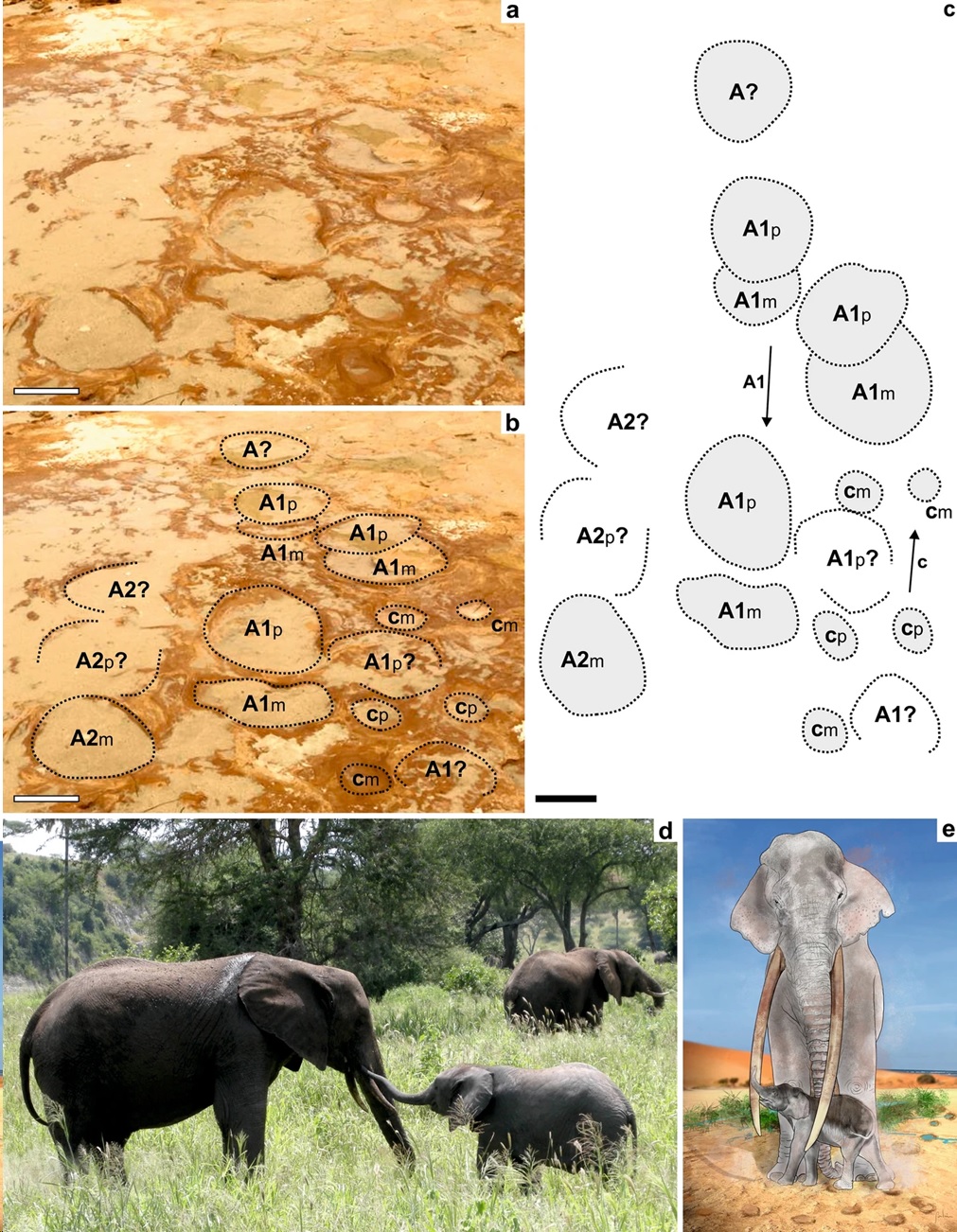20-09-2021
Following the fossil footprints of extinct elephants in southern Iberia
Barcelona, September 17, 2021. A study published in the journal Science Reports describes a set of footprints of a fossil species of elephant -Palaeoloxodon antiquus- discovered in the town of Matalascañas, near the Doñana National Park (Huelva). Professor Zain Belaústegui, a member of the Department of Earth and Ocean Dynamics of the Faculty of Earth Sciences and the Institute for Research on Biodiversity (IRBio) of the University of Barcelona, participates in the work.
The study analyzes the characteristics of the fossil footprints found in Matalascañas to reconstruct the characteristics of the paleoenvironment of the area, and is led by Carlos Neto de Carvalho, geologist, paleontologist and researcher at the Dom Luiz Institute (University of Lisbon) and Naturtejo UNESCO Global Geopark (Portugal), and by ichnologist Fernando Muñiz, professor at the University of Seville.
The team has analyzed and measured a total of 34 tracks and traces - with a chronology of approximately 106,000 years - associated with the elephant Palaeoloxodon antiquus, an extinct species of the European Middle Pleistocene that reached large physical dimensions. Characterized by large straight tusks and robust musculature, this fossil species is phylogenetically related to African forest elephants (Loxodonta cyclotis).
Analysis of the footprints revealed that they correspond to adults, juveniles and calves. To determine the age of each specimen, the authors calculated shoulder height and body mass based on the length of the footprint.
Specifically, the tracks of 14 hatchlings were identified, which were likely to be newborns or under two years of age, with a body mass ranging from 70 to 200 kg. The tracks of eight juveniles (two to seven years old) and six adolescents (eight to 15 years old) were also discovered. The tracks of adult individuals -probably females older than 15 years- that were close to the tracks left by the hatchlings were also analyzed. Only two tracks could be identified as corresponding to males, with much larger tracks -more than 50 cm in length- and a body mass of more than seven tons.
The reconstruction of the paleoenvironment indicates that at the end of the Pleistocene this region was an ecological habitat for reproduction, breeding and feeding of the youngest individuals that probably did not have the capacity to move to more distant areas. All the evidence points to the hypothesis that these extinct proboscids had a prominent ecological role in the diet of the Neanderthals (Homo neanderthalensis), regardless of the size and strength of these large mammals endowed with such menacing tusks.
Article:
Neto de Carvalho, C.; Belaústegui, Z.; Toscano, A.; Muñiz, F.; Belo, A.; Galán, J.M.; Gómez, P.; Cáceres, L.M.; Rodríguez-Vidal, J.; Proença Cunha, P.; Cachão, M. ; Ruiz, F.; Ramirez-Cruzado, S.; Giles-Guzmán, F.; Finlayson, G.; Finlayson, S.; Finlayson, C. «First tracks of newborn straight-tusked elephants (Palaeoloxodon antiquus)». Science Reports, setembre de 2021. Doi: 10.1038/s41598-021-96754-1
Source: PressUB
